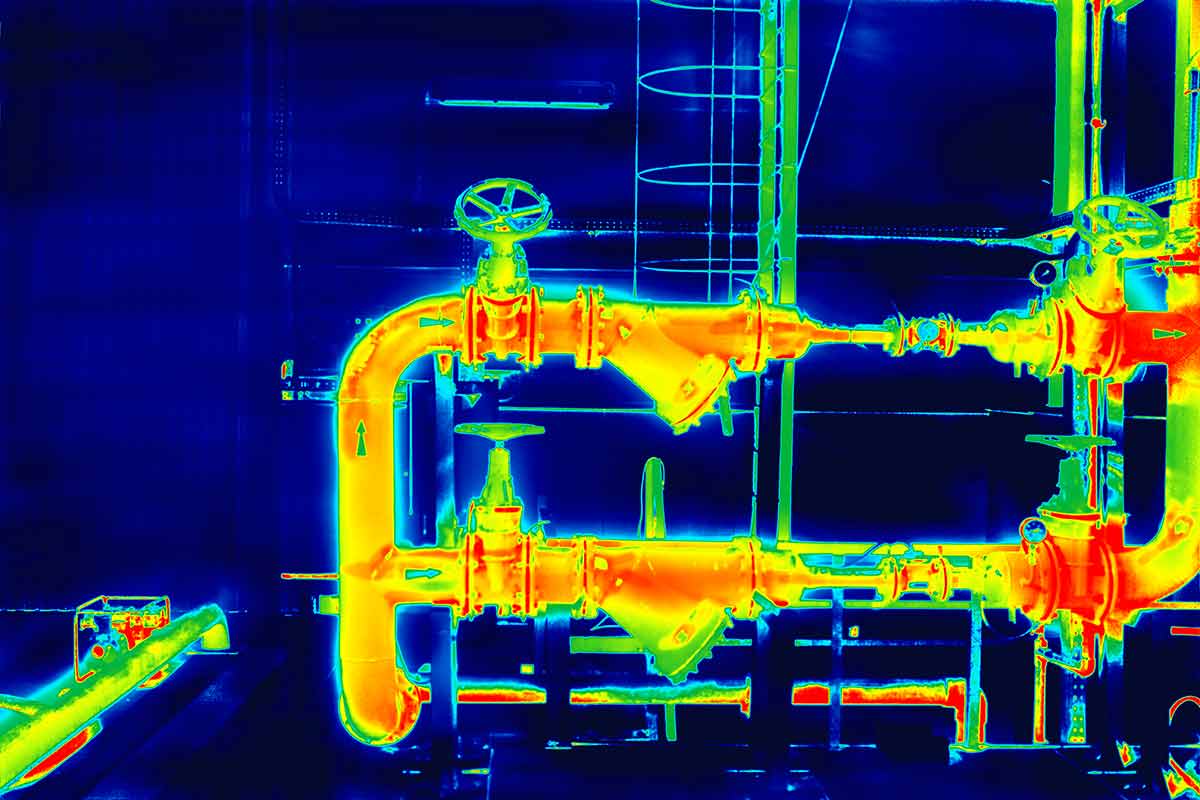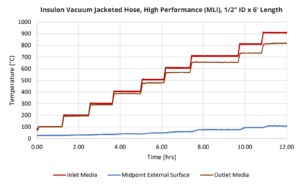Vacuum insulation demo
The video above includes two demonstrations illustrating the thermal performance of Insulon® advanced vacuum insulation. The first demonstration is at high temperatures (650°C / 1200°F), and the second demonstration is at cryogenic temperatures (-196°C / -321°F). This video uses three optical systems: a regular video camera, a thermal camera, and a Schlieren system. The thermal camera and Schlieren setup are useful tools for heat flow visualization.
High-temperature demonstration
In this demo, hot air (650°C / 1200°F) is transported through two stainless steel tubes. The first tube is built with Insulon® advanced vacuum insulation. The second tube is a single-walled, uninsulated tube. Insulon® Technology retains heat inside the tube, conserving energy and drastically reducing external surface temperature.
Cryogenic demonstration
In the low-temperature demonstration, liquid nitrogen (-196°C / -321°F) evaporates from two open-top canisters. The first canister is built with Insulon® Technology, and second canister is single-walled and uninsulated. The liquid nitrogen evaporates from the unprotected canister at a rapid rate. The Insulon® canister slows down the rate of boil-off, helping to conserve liquid nitrogen for longer period of time.
Advanced vacuum insulation can help cryogenic systems reduce boil-off and conserve valuable materials. Excessive boil-off can lead to material losses, which poses a challenge for cryogenic systems.
What is thermal imaging?
Thermal imaging cameras are different from regular cameras, which capture visible light. Thermal imaging can illustrate heat by capturing infrared radiation, also called heat signature. The variation in heat signature is represented by different colors, which show areas of relative heat difference within the frame.

What is Schlieren imaging?
Schlieren imaging is an optical technique that can be used to visualize changes in fluid density and illustrate heat flow.

Temperature and air density are inversely correlated, which means when temperature rises, air density decreases. As the density of the air changes, so does the refractivity. Schlieren photography can capture these fluctuations, illustrating the path of heat flow.

What is Insulon® Technology?
The double-walled vacuum insulated components featured in this video were made with Insulon® Technology. Insulon® is an advanced form of vacuum insulation that can be engineered for applications ranging from -270 to 815+ degrees Celsius.



